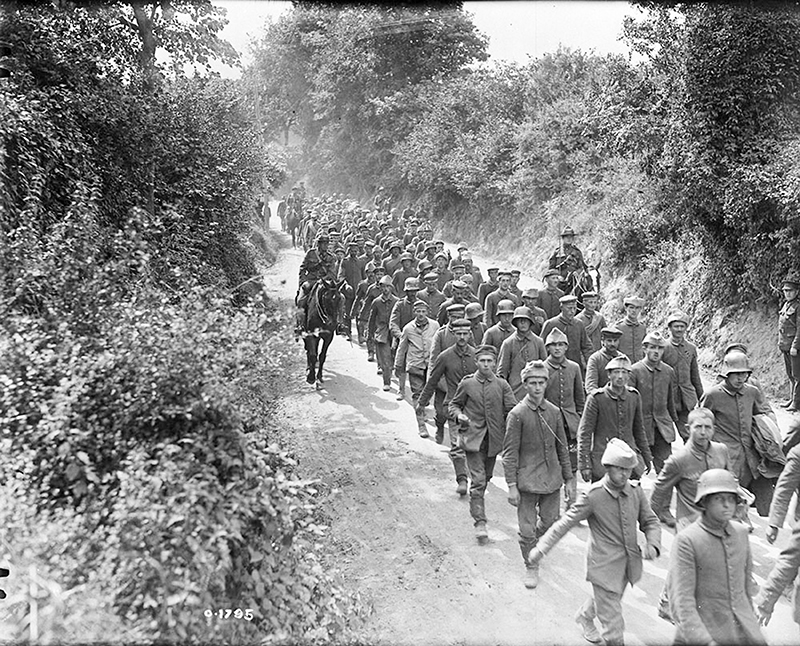Just four months after the Battle of Vimy Ridge, Canadian troops took part in another campaign that’s known as “Canada’s forgotten battle of the First World War.”
The ten-day drive to capture Hill 70 and the city of Lens, France in August of 1917 was the first major battle orchestrated by the Canadian-appointed commander of the Canadian Corps, Sir Arthur Currie, and was fought entirely by Canadians.
It defined the brutal nature of the First World War: constant shelling, machine gun fire, deadly mustard gas, hand-to-hand combat, and it claimed the lives of three young men from Sarnia.
Hoping to divert German troops from Ypres and Passchendaele, the British High Command ordered the Canadian Corps to attack the heavily fortified city of Lens. General Currie argued too many men would die and proposed instead attacking the German-held Hill 70 overlooking the city. Currie got his way.
Hill 70 was a treeless ridge featuring a maze of trenches and dugouts and strategically placed German machine gun posts. The assault began 100 years ago next week, at 4:25 a.m. on Aug. 15th.
As they gained ground, the Canadians repelled a series of German counterattacks that included flamethrowers and mustard gas. It was the first time Canadians troops had experienced the chemical warfare agent, which causes skin and lungs to blister.
The Canadians took Hill 70 in three days, but the bloodbath claimed the lives of many, including two Sarnians.
Ralph Ackerman grew up on Russell Street and enlisted at age 23. In his letters home, he remained positive in hellish circumstances. He spoke of adjusting to “bullets whistling and zipping around you” and of having “lots of lice and rats for company.”
The year before he’d been treated for shell shock, impetigo and a gunshot wound to the scalp.
Private Ackerman was killed the first day of the assault. He was reported missing, his body was never found.
Lance Corporal Harold Ketch, 23, was a printer and a journalist by trade. He died the same day.
In a poignant letter to his sister in 1916, Ketch wished others could witness the “noble sacrifices our fellows are making for the glory of the old empire.”
After being wounded at Vimy Ridge in April and receiving medals for “conspicuous bravery,” Harold Ketch was killed on Aug. 15. His mother in Sarnia learned later that bombs destroyed her son’s grave near Lens.
A local tribute opened with this line: “A brilliant journalistic and literary life has been cut short.”
Despite the casualties, corps commanders considered the taking of Hill 70 an overwhelming victory; consequently, they decided to push into Lens, even though the Canadians were overextended and inexperienced in urban combat.
The weakened Canadian troops had no choice and no chance. Attacks were launched on Aug. 21 and again on Aug. 23 and the Canadians suffered heavy casualties. The battle ended on Aug. 25th with the Germans still in possession of the city.
One casualty was Private Charles Major, a clerk who grew up on Davis Street. Enlisting at 32, Major first saw action on the front lines in June 1917.
Two months later he was dead, with no known grave, another victim of the hopeless assault on Lens.
In just ten days, 9,100 Canadians were listed as killed, wounded or missing, yet the campaign for Hill 70 and Lens is “Canada’s forgotten battle.”
Ralph Ackerman, Harold Ketch and Charles Major should never be forgotten. Their names are etched on the Sarnia Cenotaph and on the Vimy Memorial.
Tom Slater and Tom St. Amand are retired high school teachers in Sarnia


